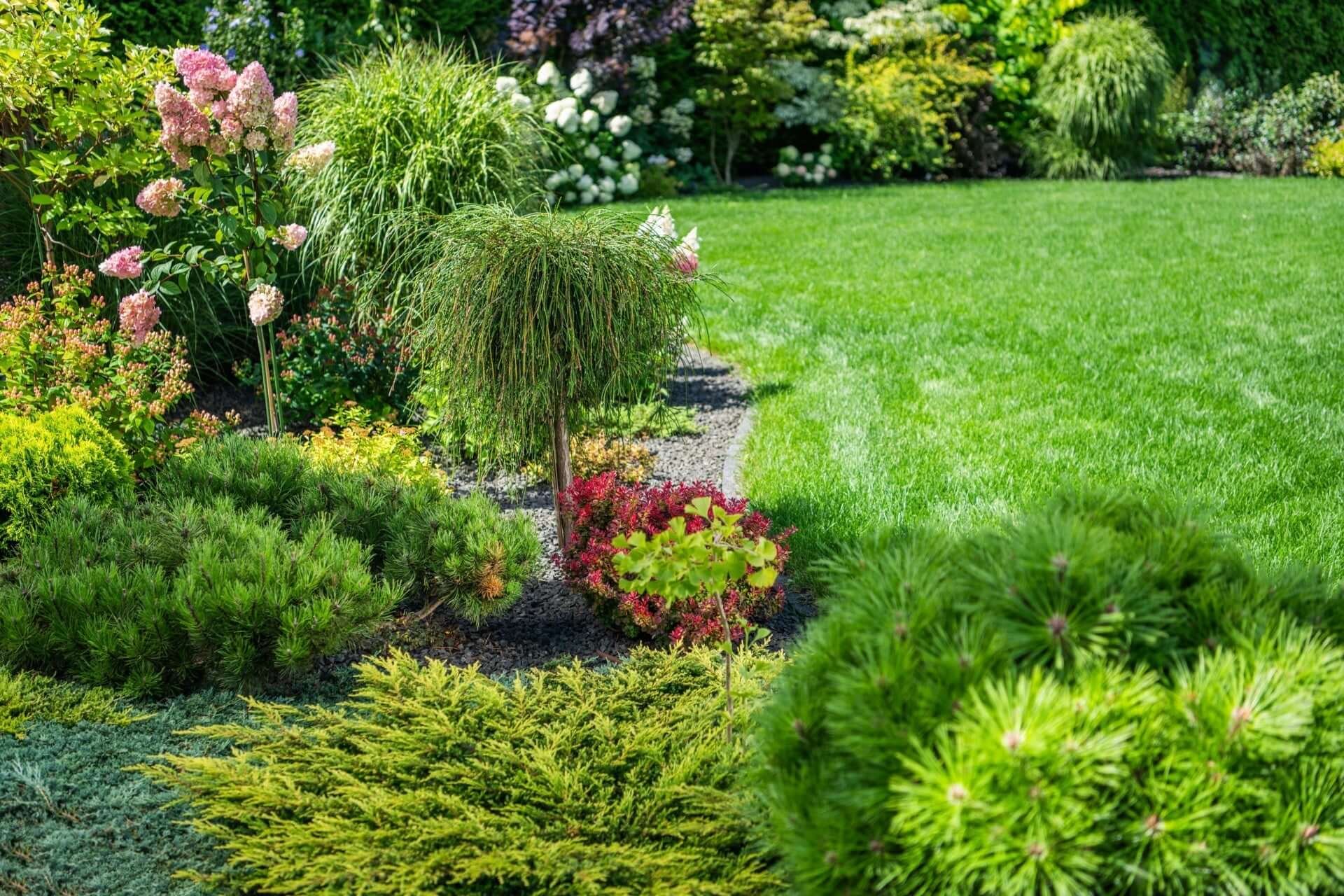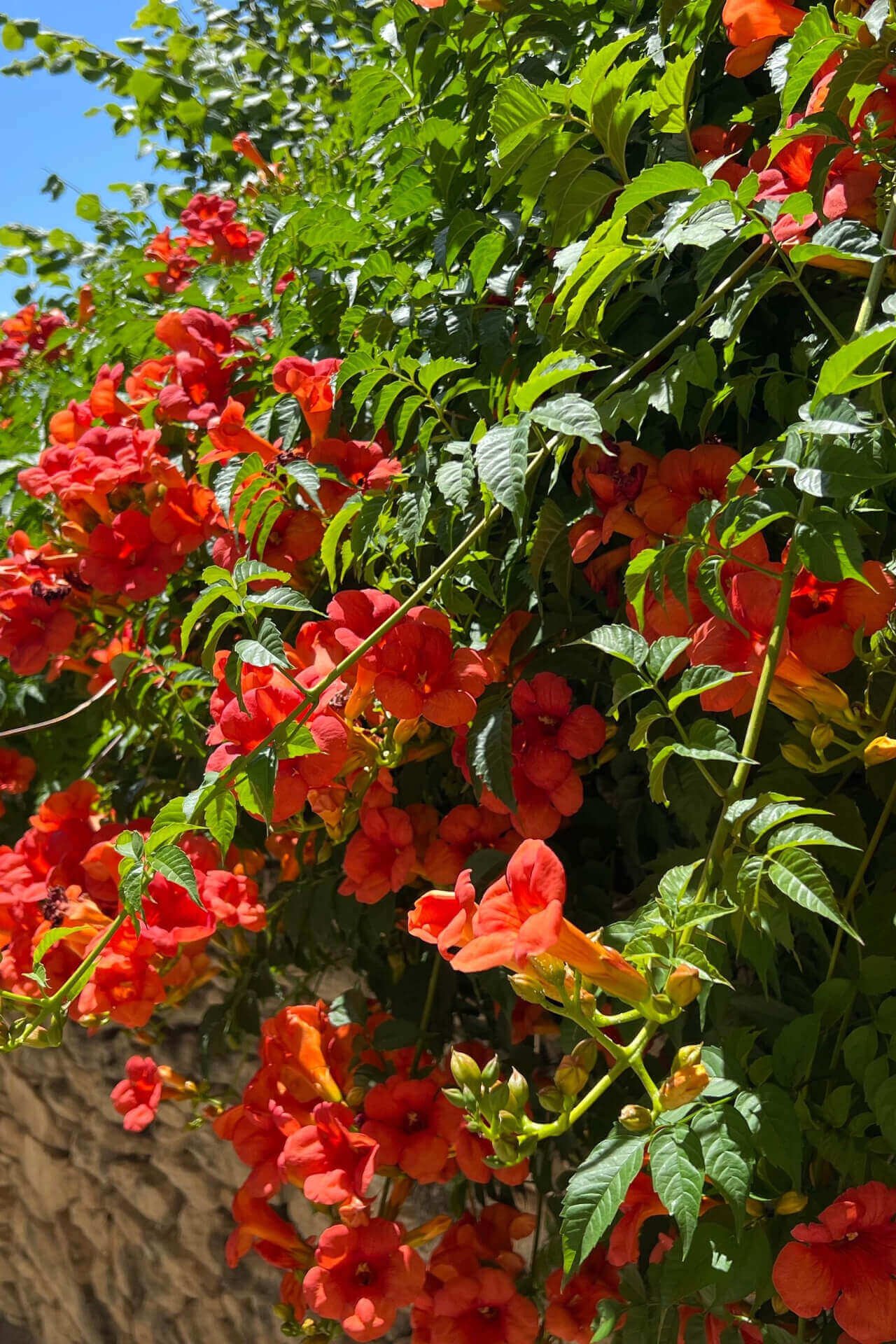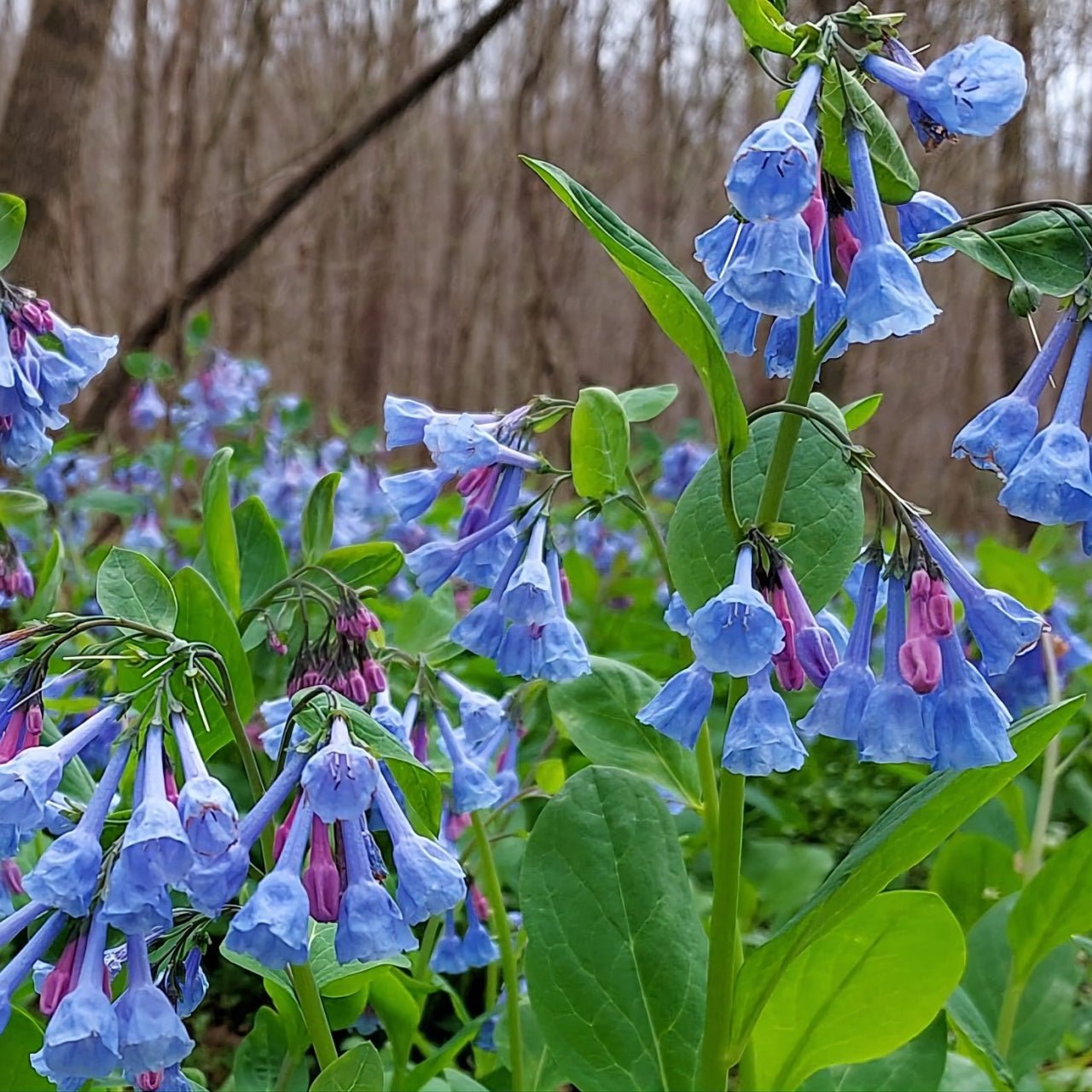10 Practical Guides to Save Money on Landscaping
Introduction Creating a beautiful, well-maintained landscape doesn't have to break the bank. You can achieve a stunning outdoor space without overspending with careful planning, creativity, and some strategic decisions.
This guide presents ten practical tips to help you save money while landscaping your property.
Plan Ahead: The key to cost-effective landscaping is thorough planning. Create a detailed landscape layout, including plant placements, pathways, and hardscapes. Having a clear vision helps you avoid costly changes or mistakes later on.
Set a Budget: Determine a realistic budget before you start your landscaping project. It will help you make informed decisions and prioritize your spending. Allocate funds to essential elements like plants, soil, and mulch first, then consider allocating for non-essential items.
Native Plants: They also tend to be more affordable since they thrive in your area naturally, reducing the need for extra care and resources. Propagate and Share: Save money on plants by propagating from seeds, cuttings, or divisions.
Additionally, consider sharing plants with friends and neighbors. Participating in plant swaps or giving and receiving cuttings can significantly expand your plant variety without spending extra. D.I.Y.
Maintenance: Regular maintenance is crucial for a well-kept landscape. Consider doing them yourself instead of hiring professionals for tasks like mowing, weeding, and pruning. Invest in quality gardening tools and equipment to ensure efficient upkeep.
Mulching: Mulch serves multiple purposes – it retains moisture, suppresses weeds, and enhances soil quality. Apply a layer of organic mulch like wood chips or straw to your plant beds. Not only will it save money on water bills, but it'll also reduce the need for frequent fertilization.
Energy-Efficient Lighting: Opt for energy-efficient L.E.D. lights to incorporate outdoor lighting. These consume less electricity, have a longer lifespan, and ultimately reduce your utility bills. Solar-powered lights are an even more cost-effective option.
Hardscape Repurposing: Repurpose materials you already have for hardscaping. Old bricks, stones, or wood can be creatively used to build pathways, borders, and even small decorative structures. It saves money and adds a unique touch to your landscape.
Water Conservation: Implement water-saving techniques such as installing a drip irrigation system. Drip irrigation targets the root zones of plants, minimizing water wastage through evaporation and runoff. Collect rainwater in barrels to use for irrigation, further reducing water bills.
Long-Term Vision: Think about the long-term when making landscaping decisions. For instance, investing in perennial plants might cost more initially, but they come back year after year, eliminating the need to replant annually. Long-term planning saves money in the grand scheme of things.
Landscaping On A Budget
These ten practical guides can create a stunning outdoor space without draining your wallet. Remember to prioritize essential elements, embrace D.I.Y. tasks, and leverage cost-effective strategies like using native plants, repurposing materials, and conserving water.
Nature has long been a source of inspiration for artists, poets, and thinkers alike. The art of crafting a beautiful and appealing landscape transcends mere gardening; it is a harmonious blend of creativity, horticultural expertise, and a deep understanding of the natural world. Like a painter's canvas or a sculptor's marble, the landscape is a medium through which one can express emotions, evoke sensations, and create a haven of tranquility. This essay explores the multifaceted aspects of landscape design, the principles that guide it, and its profound impact on our senses and well-being.
The Artistic Principles of Landscape Design Landscape design is not a mere arrangement of plants and stones but a purposeful orchestration of elements that results in a coherent and aesthetically pleasing whole. Landscape design draws upon fundamental artistic principles such as balance, unity, rhythm, and focal points.
Achieving visual equilibrium through the strategic placement of elements creates a sense of harmony that resonates with the viewer. Unity ensures that the landscape appears unified, where every component serves a purpose and contributes to the overall narrative. The rhythm guides the eye through the landscape, much like a melody in a musical composition.
Focal points, whether they are a striking tree, an elegant sculpture, or a carefully designed water feature, draw attention and provide a sense of intrigue. Creating Emotion and Atmosphere Beyond the visual appeal, a well-crafted landscape evokes emotions and creates a distinct atmosphere.
Consider a meandering pathway through a fragrant rose garden – the gentle curves and delicate scents evoke a sense of romance and nostalgia. On the other hand, a sleek and modern landscape with clean lines and minimalist elements may elicit feelings of serenity and order. The choice of plants, color palettes, and materials contributes significantly to the emotional resonance of a landscape. Vibrant flowers symbolize vitality and joy, while muted tones of green and blue evoke calmness and tranquility.
Incorporating water elements, like ponds or fountains, adds a soothing auditory dimension that complements the visual experience. Connecting with Nature A beautifully crafted landscape is not separate from nature but rather an extension. Skilled landscape designers work with the land's natural features, harnessing its contours, slopes, and existing vegetation to create a seamless integration. This approach respects the environment and enhances the sense of authenticity and timelessness.
Native Plants Attract Local Wildlife
The interplay of sunlight and shadow, the rustling of leaves, and the ever-changing sky connect to nature's cycles, reminding us of its beauty and power.
The Healing Power of Landscapes A thoughtfully created landscape invites individuals to slow down, breathe deeply, and immerse themselves in the present moment.
Healing gardens, often found in healthcare institutions, are deliberately designed to offer solace and comfort. These spaces incorporate soothing colors, gentle sounds, and areas for reflection. Even beyond clinical settings, a well-tended garden at home can serve as a sanctuary for relaxation and introspection.
Sustainability and Ethical Responsibility In an era of increasing environmental awareness, landscape design has taken on new dimensions of responsibility. Sustainable landscaping practices aim to minimize resource consumption, reduce waste, and promote biodiversity. Drought-resistant plants, efficient irrigation systems, and eco-friendly materials have become essential tools in the modern landscape designer's palette.
Moreover, ethical considerations come into play when crafting landscapes. Preservation of natural habitats, responsible water management, and avoiding invasive plant species all reflect a commitment to the environment and the future generations who will inherit these spaces.
The art of crafting a beautiful and appealing landscape is a testament to humanity's creative spirit and our deep-seated connection with the natural world. It is an art form that engages the senses, stirs emotions, and offers respite from the demands of daily life.
A well-designed landscape goes beyond aesthetic pleasure; it has the potential to inspire, heal, and transform both individuals and communities. As we continue to seek harmony between our built environments and the natural world, the art of landscape design will remain a vital and cherished pursuit.
Simple Ways to Save Money and Still Have a Thriving Garden
Gardening provides economic and aesthetic benefits by producing fresh food while beautifying your environment. Expenses can quickly accumulate when you feel compelled to purchase every new gardening tool or specialty product in the marketplace. Creating a successful garden doesn't need substantial financial resources. Through creative solutions and knowledge of natural gardening methods, your garden can flourish and stay healthy without leading to financial strain. This guide provides budget-friendly gardening advice, including homemade fertilizer creation and pesticide production methods.
1. The key to a flourishing garden is cultivating nutrient-rich soil through composting. A practical and economical method for building your garden foundation involves producing your compost. You likely already have most of the ingredients: You can create compost with kitchen waste like fruit peels and coffee grounds, yard debris such as leaves and small twigs, and even cardboard or newspaper. Air out your compost by turning it every few weeks and allowing time to decompose into a dark, crumbly soil amendment.
Consistent compost will provide your soil with vital organic matter and nutrients in addition to your planting beds. Maintaining good soil structure and water retention through compost use leads to less frequent watering needs for plants while reducing their vulnerability to drought stress.
2. Boost your plants without spending money on commercial fertilizers as homemade solutions exist. Simple and affordable materials can produce potent nutrient solutions for garden enhancement.
Banana Peel Fertilizer: The high potassium content in banana peels helps promote flower and fruit production in plants. Place banana peels in water for several days and utilize this solution as plant fertilizer.
Eggshell Calcium Supplement: Crushed eggshells add calcium to the soil as they break down, aiding tomatoes and other plants in overcoming calcium shortages. Transform cleaned, dried eggshells into a fine powder, and then add the mixture to your soil or compost.
Weed Tea: Place nuisance weeds in water-filled buckets to create a nutrient-rich "tea." Allow the weeds to break down in the water for several weeks, stirring them now and then. When the weed tea is prepared, mix one tea with ten parts water and water your plants to add nitrogen.
3. Commercial pesticides can drain your wallet, and their chemical composition poses risks to helpful insects and pollinators. Natural homemade alternatives offer cost-effective solutions that protect your garden's ecosystem while avoiding harmful chemicals.
Neem Oil Spray: The initial price of neem oil proves economical because its effectiveness extends from small quantities. Combine several drops of neem oil with water and a squirt of mild dish soap before applying the mixture to the impacted leaves. The solution repels garden pests such as aphids, spider mites, and whiteflies.
Soap Spray: Combine a few teaspoons of mild liquid dish soap with around a quart of water to create a simple yet cost-effective insecticidal spray. Proper usage of this solution enables effective control of soft-bodied pests, including aphids, thrips, and mealybugs. After several hours, remove leaf debris by rinsing it with water while protecting it from potential leaf burn.
Garlic and Hot Pepper Spray: First, blend garlic cloves with hot peppers and water before straining the mixture and adding more water to dilute it. Use this spray against chewing insects. Pests usually avoid areas because the strong smell and spicy flavor repels them.
4. Your planting strategy can save money, prevent common mistakes, and enhance soil health and pest control.
Companion Planting: Certain plant species thrive more successfully when grown together because they mutually repel pests from one another. Marigolds emit a fragrance that deters specific insects, making them ideal companion plants for tomatoes and peppers. Growing basil beside tomato plants enhances their taste and controls specific pest populations.
Crop Rotation: Regularly changing your planted crops every season minimizes the accumulation of soil-based diseases and pests. Rotating plant families helps prevent pathogens from thriving in specific areas.
Mulching: Organic mulch composed of leaves, straw, grass clippings, or wood chips retains soil moisture and prevents weed growth while decomposing to enhance soil nutrients. This practice eliminates the need for regular watering and weed management, which saves time and money.
5. Yearly purchases of new plants will lead to higher gardening expenses. Begin by planting or collecting seeds from your current crops. Fruits, vegetables, and herbs yield seeds, which you can clean and dry for storage until the next growing season.
Propagating plant cuttings can cost-effectively expand a garden. Rosemary, mint, and thyme herbs allow root development in water before being transferred to small pots until they reach sufficient strength for planting.
6. Remember that gardening doesn't require you to work independently. Numerous communities provide seed swaps, garden clubs, or compost exchanges to let people share resources and gain knowledge from experienced gardeners. Exchange cuttings or seedlings with your gardening neighbor and share your surplus produce. You will create a more varied garden and build stronger community connections while saving money.
Using homemade fertilizers alongside natural pest control measures and basic planting techniques allows you to grow a productive garden without incurring high expenses. Healthy soil and biodiversity management and resource-sharing practices lead to financial savings and an eco-friendly and sustainable gardening ecosystem. Anyone who applies ingenuity and effort can produce beautiful flowers, tasty herbs, and other produce without spending much money.
Read more
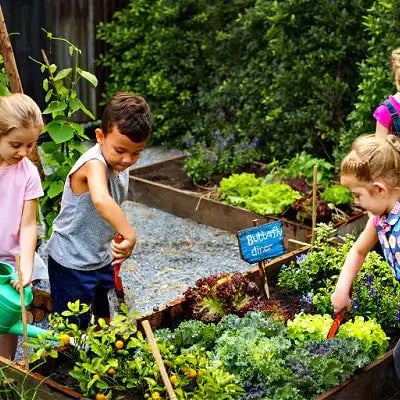
Make It A Family Affair: Gardening With Your ChildrenAnother busy weekend approaches with my two children, so I mentally prepare for the activities--my daughter's volleyball practice, my son's Sc...
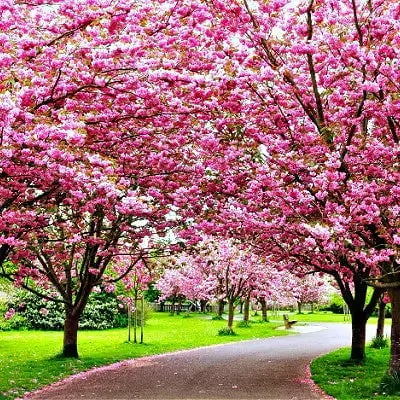
Few things in a landscape make passersby stop and notice more than a grove of flowering trees. There’s a flowering tree for just about every hardiness zone in the country, so no front or backyar...


